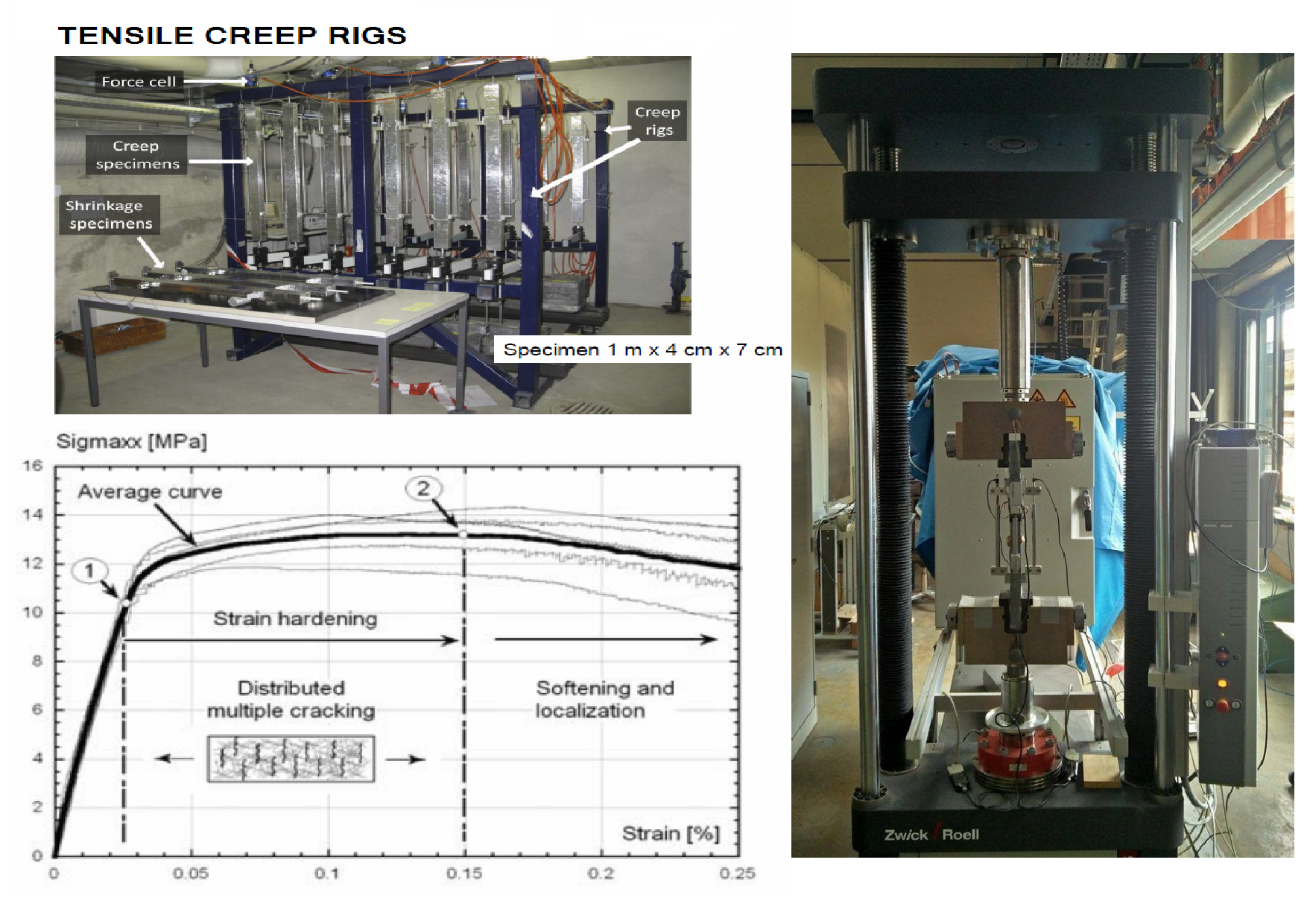SNSF Project : FNS “Low loading rates UHPFRC” (23.14.03)
Duration : 01.08.2015 – 31.07.2019
Supervisor : Dr. Emmanuel Denarié
Doctoral Student : Mohamed Abdul Hafiz
Tensile response of Eco- Strain Hardening Ultra High Performance Fibre Reinforced Concretes under low temperatures and low loading rates
Introduction
The high tensile strength (10 to 20 MPa) and strain hardening response (several ‰) exhibited by Strain Hardening Ultra High Performance Fibre Reinforced Concretes (SH-UHPFRC) under tensile loading are very appealing features to improve the efficiency and durability of new or existing structures. The knowledge of their mechanical properties (stiffness, strength and deformability) evolution with age, under low temperature curing conditions and low loading rates, representative of in-situ casting or sustained loading in winter conditions, is missing and is needed for optimizing their use. This lack of knowledge leads to the objectives of the current thesis.
Objectives
- To determine the influence of low loading rates (10-6 to 10-8 1/s), representative of the rate of development of eigen-stresses in cast-on site applications of SH-UHPFRC, on the tensile resistance and deformability of these materials.
- To determine the effect of temperatures in the range of 0 to 30° C, on the development of hydration, mechanical properties at the microscale, and tensile resistance and deformability of SH-UHPFRC, for low loading rates.
- To relate the observed mechanical responses at the macro scale to the responses at micro and meso scales through proper models.
Methodology
- Two types of SH-UHPFRC with different matrices will be studied: one with pure CEM I and silica fume as reference, and one with massive substitution of both clinker and ultra-fines by limestone powder.
- The macro tests will be done using creep rigs, TSTM and an optimized electromechanical testing machine for tensile testing.
- At the meso level, pull out tests of single fibers in the UHPC matrix, will be done.
- At the micro level, evolution of mechanical properties will be studied using Nano-indentation techniques and Peak Force tapping Atomic Force Microscopy.
